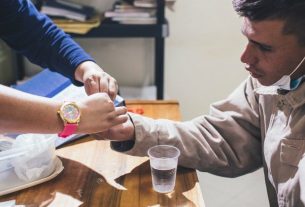Pornographic addiction—often referred to as Problematic Pornography Use (PPU)—is a growing behavioral health concern affecting millions globally. Though not formally recognized as a medical disorder in the DSM-5, mounting evidence links compulsive porn consumption to patterns similar to substance addiction, including cravings, withdrawal-like symptoms, and impaired daily functioning.
📊 Global Scope and Prevalence
Recent international surveys suggest that between 3.2% and 16.6% of the global population may meet criteria for PPU. In the United States alone, 11% of men and 3% of women self-report addiction-like behaviors related to pornography. Exposure begins early, with boys encountering pornographic content by age 10 and girls by 13 on average. The top countries for porn consumption include the U.S., the Philippines, France, and the U.K..
🧠 Why It’s Hard to Stop
Pornography activates the brain’s reward system, releasing dopamine in ways that mimic drug use. Over time, this can lead to desensitization, compulsive viewing, and difficulty moderating behavior—even when users experience negative consequences such as relationship breakdowns, anxiety, or sexual dysfunction. Studies show that over 50% of users with problematic use report difficulty stopping, despite wanting to quit.
👥 Societal Perception and Bias
While porn addiction is increasingly acknowledged in clinical circles, societal attitudes remain conflicted. Many non-users view it as a moral failing rather than a psychological struggle, contributing to stigma and shame. This bias often deters individuals from seeking help, especially in cultures where sexuality is taboo or religiously regulated. Ironically, the same societies that condemn porn consumption may also normalize hypersexualized media, creating a paradox of moral hypocrisy.
🛐 Religion and Psychology as Treatment Paths
Recovery is possible through both spiritual and clinical interventions. Faith-based programs often emphasize accountability, community support, and moral realignment. Meanwhile, psychological approaches—such as Cognitive Behavioral Therapy (CBT), mindfulness, and group counseling—target the underlying behavioral patterns and emotional triggers.
Data shows that only 4% to 10% of those affected seek treatment, while 21% to 37% express a desire for help but face barriers such as cost, stigma, or lack of access. Successful recovery often requires a multi-pronged approach that combines therapy, lifestyle changes, and—where applicable—spiritual guidance.
🔍 Conclusion
Pornographic addiction is a complex, deeply personal struggle that intersects with mental health, societal norms, and digital culture. Addressing it requires empathy, evidence-based treatment, and a shift away from moral judgment toward understanding. As awareness grows, so too must the resources and compassion available to those seeking to reclaim control over their lives.
You can explore more detailed statistics and treatment insights from the Addiction Resource Network and Ecare Behavioral Institute.
Individual Therapy for Life’s Challenges Picture by gracebridgebehavioral


